Students learn about ancient form of Japanese music via special hands-on demo
By Katie Neitz
Renowned Japanese ensemble Reigaksuha very rarely performs in the United States. Which made the Sept. 19 evening performance of gagaku, an ancient form of orchestral music, at Williams Center for the Arts special in and of itself.
Students in Professor Larry Stockton’s World Music Traditions course sat in the audience—with a unique appreciation for the ethereal tones being created before them. Just a few hours earlier, Stockton’s students were on stage with Reigaksuha, who generously invited students to play their wind, string, and percussion instruments.
At a preview session earlier in the day, students and community members learned about the history and instruments of gagaku. Musicians invited students to climb on stage and give the instruments a try.
“It was a marvelous experience,” says Stockton, chair of the music department. “I was surprised they let the students try the instruments and surprised by how many students went up on stage to participate. These are very rare instruments that the students had probably never seen before. I think it had a positive impact. I think the musicians recognize how unusual their music is, especially to American audiences.”
Gagaku is one of the oldest forms of continuously practiced orchestral music in the world. It dates back to the eighth century in Japan, and like many Japanese cultural traditions, has been passed down from generation to generation.
Reigakusha was formed in 1985 by Shiba, a Japanese composer who performed gagaku as part of the Imperial Court’s orchestra. The ensemble had a show scheduled in New York City, and the Japan Society of New York helped facilitate a piggyback performance at Lafayette.
The evening show featured both ancient and modern gagaku works as well as bugaku, a special dance performance.
“The audience first had the opportunity to hear traditional music that has been unchanged for more than 1,000 years,” Stockton says. “It was court music—very slow, very austere. The second half then was more of a modern fusion.”
Stockton’s World Music Traditions course covers the music of Africa, India, Indonesia, and Japan. Even though many students have no prior experience as musicians, Stockton encourages hands-on participation. Each student is required to take part in a 30-minute weekly drum session.
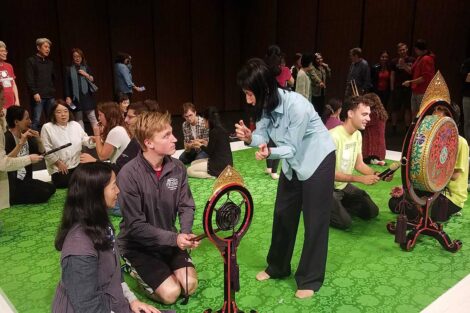
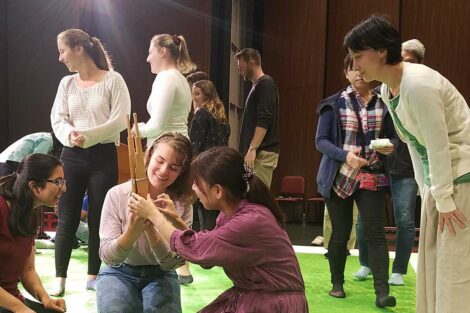
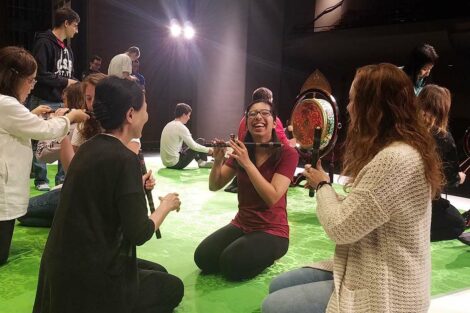
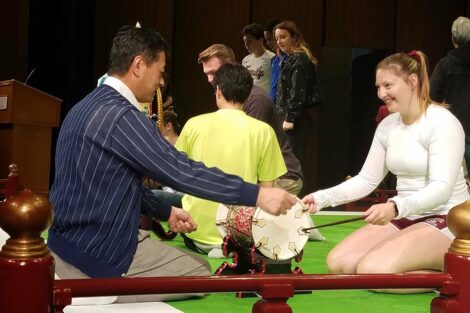
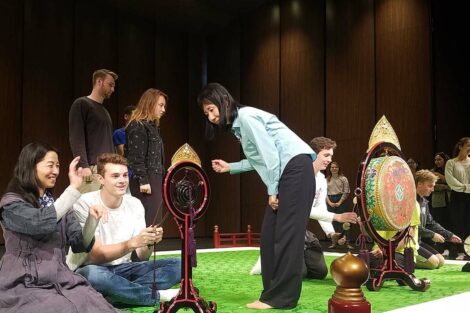

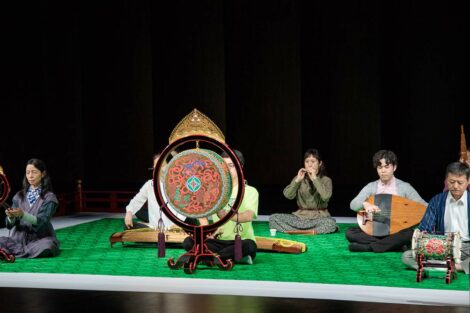
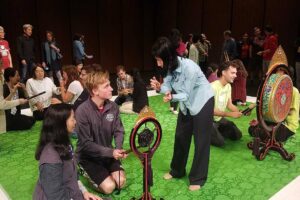
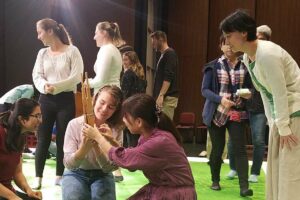
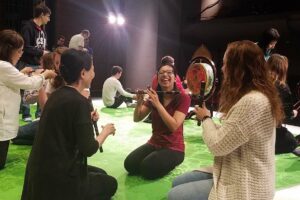
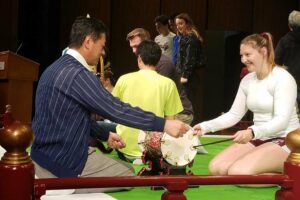
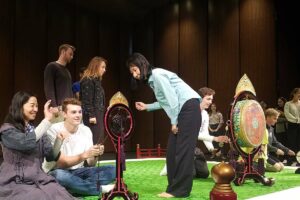
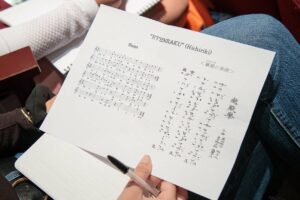
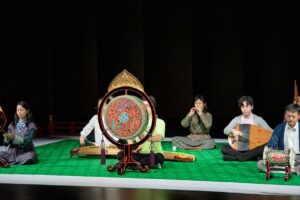
1 Comment
Some of the instruments look more Chinese than Japanese, but, then again, much of Japanese early aristocratic culture, writing and musical instruments, for example, were imported from China.
The Biwa, Fue, flute-like instrument, koto and light Taiko are common still these days but the larger drum (taiko), the small taiko and chime have Chinese ornamentation. The sounds must have been quite unusual and interesting.
The Kanji on the right side of the Etenraku also appears to be early Japanese Kanji as they more closely resemble Chinese characters.
Wish I could have seen this demonstration.
Comments are closed.